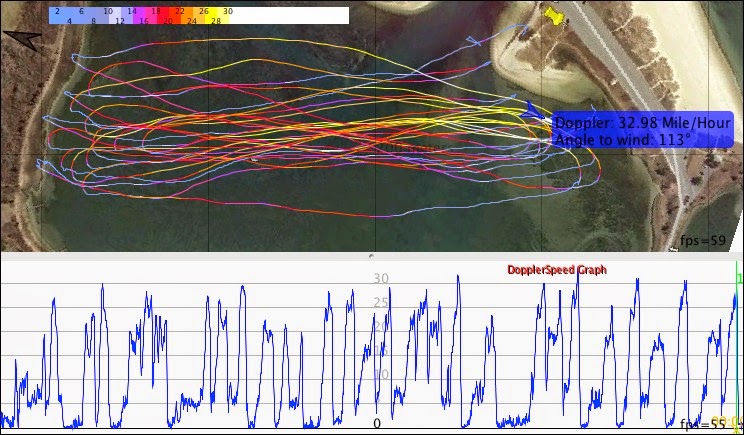The forward loop is the dream of many windsurfers. For some young hot-shots, it's easy. They just "jump high, sheet in, look back", and get around. But unless you are young and heal fast, I do
not recommend this approach. At the first loop lecture I heard, three guys had tried this; all three got thrown onto their gear and got hurt. In at least one case, it was a season-ending injury.
For the cautious rest of us, there is another approach to learning the loop. It's based on Remko de Weerd's "Loop in 4 steps" video, and has since been adapted by AKB. I have seen dozens of windsurfers getting started on the loop this way, and nobody got hurt; a bunch of guys actually did learn to loop this way. Not me, though. Every time wind and waves are right, I chicken out. I'm not the only one, either - I know several windsurfers who have been working on loops for years, without ever getting one.
So when I read what
Tonky Frans had to say about the loop on thewavehobbit, I got excited. Many things Tonky suggests are quite similar to what others say, but there are a few things where he differs. Here's a very brief version of Tonky's advice:
- Pop the board at a slight upwind angle with a mostly depowered sail. Your body is centered over the board.
- Move the rig towards the wind (the mast to windward).
- Pull your back leg up to your butt.
- Keep the back hand close to your body, and the front arm relatively extended.
- As the nose of the board turns downwind, your sail will automatically power up. Speed up the rotation by extending your front leg (but keep the back leg and back arm bent).
- Keep this position as you get thrown around.
There's some more advice about the ending, but if you make it to step 6, the rest is easy. It's getting to this point that hard. Let's look at how Tonky's advice helps:
Pop the board at a slight upwind angle.
This is new to me (at least for flatwater loops). The more common advice is to go downwind, or at most at a beam reach. Tonky states that a slight upwind angle helps to get more height, and to reduce forward speed. That makes perfect sense to me. I like the idea of reducing forward speed, since falling back into the water after an upwind jump with minimal speed is definitely not scary. I can do that.
Move the rig towards the wind.
This is a common suggestion for loops, seen in Remko's video and heard from the ABK folks. The idea is that the sideways pressure from the mast foot will move the nose of the board downwind. Since everything will be in the air, not a lot of pressure is needed to get things moving.
However, this advice is quite different from "jump high and sheet in". In it's purest form, this will have the mast vertical, and start an end-over-end rotation. That's fine if you're jumping full-speed over a big wave, and end up 15 feet above the water. Anything smaller, chances are that things go wrong big time. Maybe your nose will land on the water, and you and/or your rig will be thrown violently onto your board. Or maybe your mast will hit the water, and you'll break it or get stuck upside down.
Keep the back hand close to your body.
Tonky says "engaging the power is just keeping the back hand right close to your body". That's quite different from "sheet in hard", a very common loop advice. How could Tonky's advice possibly work? He does point out that not having enough power in the sail can cause under-rotation (a common problem for loop learners).
The important thing is that moving the rig to windward will cause the nose of the board to turn downwind. Even if the arms don't move at all, this will cause the rig to power up - an "automatic sheet-in", so to say. Once the sail starts to power up, the nose will turn downward quicker, and the power in the sail will increase rapidly, until you get through around. If you extend your back arm at this point, that will take power out of the sail, and slow the rotation down - bad idea!
If you're thinking about looping, or about teaching someone else to loop, please make sure to
read the original article carefully. The different parts of advice go together - mixing parts of it with other commonly heard advice could have very bad consequences. For example, if you do want to try a loop by jumping over big waves and sheeting in hard, you definitely should try this from a downwind takeoff to reduce the chances of falling onto your gear!
But for me, Tonky's explanation makes perfect sense. I particularly like how he explains how various elements reduce the risks. For example, staying over the back of the board keeps you from getting thrown into your gear (assuming the other parts of your setup let you rotate horizontally); or how staying below the sail means that over-rotating is not something to be afraid of.






